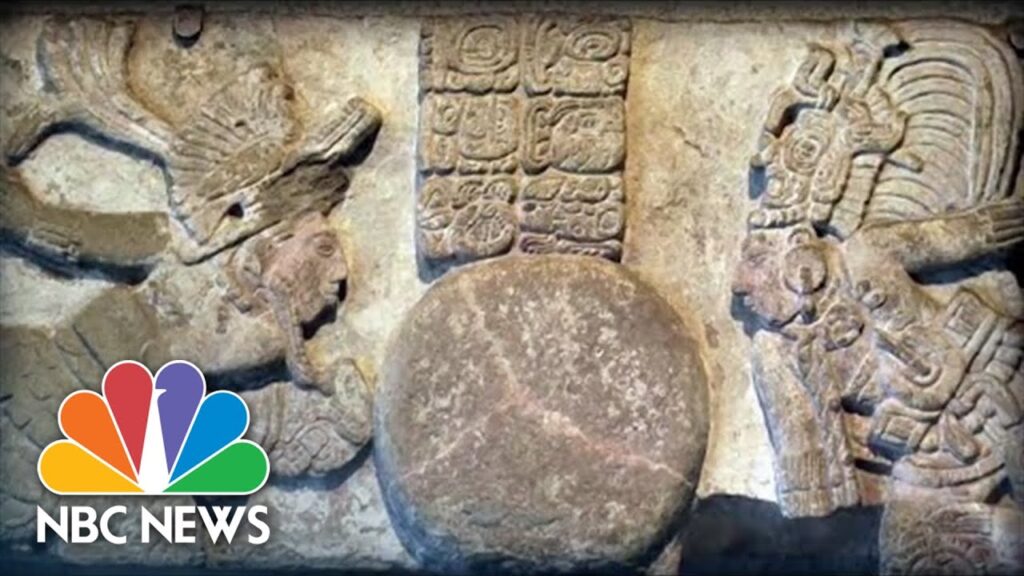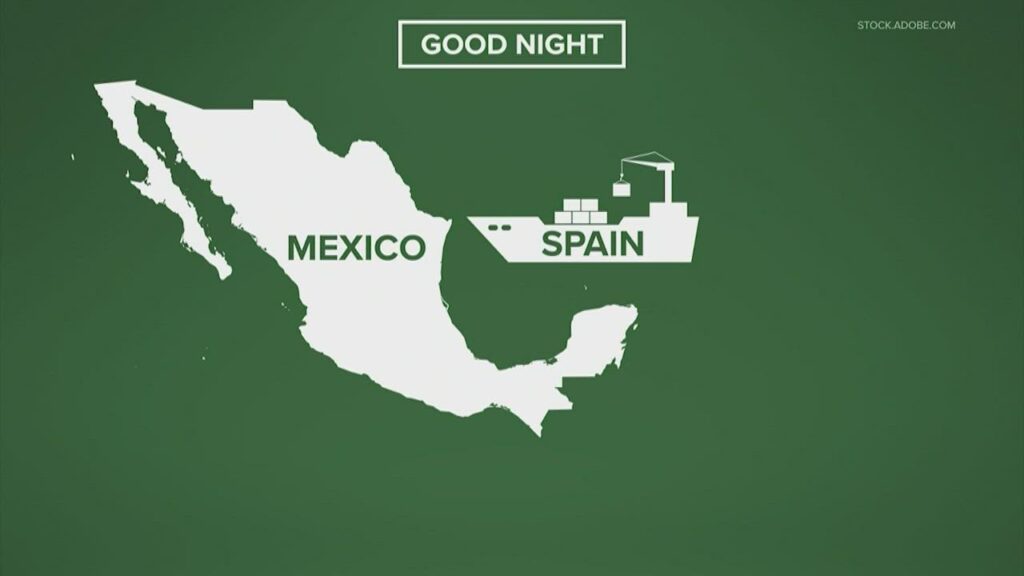The Discovery of Mayan Rulers’ Ashes in Rubber Balls
The ancient Maya civilization, which flourished in parts of Mexico, has left behind an assortment of archaeological treasures that continue to astonish researchers. One of the most recent and compelling discoveries has been the finding of rubber balls containing the ashes of Mayan rulers. These artifacts offer a unique glimpse into the burial rites and cultural practices surrounding death and the afterlife in the Mayan world.
Forensic analysis and dating techniques have confirmed that these rubber balls date back to the Classic period of Mayan history, which ranged from approximately 250 to 900 AD. The process involved in creating these rubber spheres was intricate and reflective of the significant role that ballgames played in Mayan society. Moreover, the presence of royal ashes within these balls underscores the importance of the game in Mayan ritual and possibly as a passage for rulers into the spiritual realm.
Excavations in sites such as El Manatí have unearthed these rubber balls alongside other valuable offerings, suggesting that the games had a ritualistic element, perhaps even acting as funerary events. The discovery adds a new layer to our understanding of the Maya civilization, providing evidence that the connection between rulers, the revered ball game, and the journey to the afterlife was profound and complex.
Significance of Rubber in Ancient Mayan Rituals
In the depths of the lush rainforests and remarkable city ruins of what is now Mexico, the ancient Maya civilization once flourished. Among their various contributions to culture, science, and everyday life, the use of rubber played a fascinating role in their rituals and religious ceremonies. The rubber, which they obtained from the sap of the Castilla elastica tree, was considered a gift from the gods and served multiple purposes in their society.
Ball Games: One of the most well-known uses of rubber by the Maya was for making balls used in the Mesoamerican ballgame, called Ōllamaliztli in Nahuatl. This game held deep religious significance and was often more than just a sport – it symbolized the struggle between life and death, with some games even culminating in human sacrifice. The bouncing rubber ball was a metaphor for the sun’s travel through the sky, a daily journey that was of utmost importance in Mayan cosmology.
Waterproofing and Symbolism: The Maya also used rubber for waterproofing various objects and as a symbolic material in ceremonies. Rubber made containers and clothing impervious to water, which was vital during the intense rainy seasons. Moreover, the malleable and durable nature of rubber lent itself to symbolic interpretations of life’s resilience and the perpetual cycle of growth and decay evident in their environment.
Figurines and Offerings: Mayan artisans crafted small rubber figurines that were used in ritual offerings to the gods. These figures often depicted deities or animals, imbued with spiritual significance, and played a role in securing divine favor for the community. The act of burning rubber, which creates a pungent smoke, was also a crucial element in various rituals, serving as a conduit for communication with the supernatural realm.
Medicine and Daily Use: Surprisingly, rubber was not strictly reserved for the spiritual and religious. It also found its way into the daily lives of the Maya, including as an ingredient in medicines. Healers were known to incorporate rubber into treatments, believing in its protective and restorative properties. The elasticity of rubber was similarly integrated into the creation of various everyday tools and items, showcasing its versatility beyond ceremonial uses.
The legacy of rubber in the lives of the ancient Maya is a testament to their innovative spirit and the profound meaning they found in the natural resources surrounding them. From the sacred ball courts to the practical waterproof vessels, rubber enriched the civilization in both the sacred and the mundane. As we wander through the remnants of their great cities and temples, we are constantly reminded of how the Maya shaped their world and how the humble sap of a tree played an integral role in that process.
INAH Archaeologist Sheds Light on Mayan Burial Practices
Exploring the depths of Mexico’s ancient history, a recent discovery by an archaeologist from the National Institute of Anthropology and History (INAH) has revealed intriguing details about Mayan burial rituals. The Mayans, one of the most enigmatic civilizations of Mesoamerica, had a complex relationship with death, seeing it not as an end but as a continuation of life in another realm. This insight came to light during excavations at a recently uncovered burial site in the Yucatan Peninsula, providing a profound glimpse into their spiritual world.
The INAH specialist, working meticulously at the site, uncovered a series of burial chambers that date back over a thousand years. Inside these chambers, the remains of individuals were accompanied by an array of fascinating grave goods, typically consisting of pottery, jade ornaments, and objects believed to aid in the journey to the afterlife. The elaborate nature of these tombs suggests that the Mayans invested significant effort and resources into the preparation for the afterlife, affirming the importance of this passage among the ancient society.
Evidence from the site indicates that the Mayans practiced various forms of interment, including extended body placement and, in some cases, cremation. Interestingly, the positioning of the body and the directional orientation of the tomb itself appear to have held symbolic meaning, often corresponding with the Mayans’ deeply rooted cosmology. The INAH archaeologist’s findings show that east-west alignments were predominant, aligning the deceased with the journey of the sun and signifying the belief in cyclical existence.
Moreover, the study of bone remains has led to revelations about the Mayans’ dietary habits, health, and even their social hierarchies. A closer examination of the skeletal remains found within these sacred grounds has provided data supporting the notion that societal elite were granted more elaborate burials, further accentuated by the presence of intricate jewelry and rare artifacts. Such discoveries outline the stratified nature of Mayan society and the disparity in burial rites between different social levels.
As the INAH archaeologist continues to unravel the complex tapestry of Mayan culture, the attention is now turning towards understanding the rituals and ceremonies that accompanied these burials. Early findings point towards a multifaceted ceremony, potentially involving music, dance, and elaborate costumes—a final farewell fitting for a civilization renowned for its artistic and spiritual achievements. This ongoing research not only enriches our understanding of the ancient Mayans but also emphasizes the profound respect for the afterlife that characterized their cultural ethos.
Exploring the Mayan Underworld: Rituals and Rubber Balls
The ancient Mayans were a civilization of intriguing rituals and beliefs, many of which connected them deeply to the underworld, or «Xibalba» as they called it. This spiritual realm was considered the domain of death and decay, but also a place of rebirth and renewal. Venturing into the Mayan underworld was not for the faint-hearted, as it was believed to be a labyrinthine domain filled with challenging trials, fearsome deities, and the spirits of ancestors.
One of the most captivating aspects of Mayan underworld rituals involved the use of natural features such as cenotes – deep, water-filled sinkholes that pepper the Yucatan Peninsula. These cenotes were thought to be gateways to Xibalba, and the Mayans often performed offerings and ceremonies at these sacred sites. Descending into the depths of a cenote, one can almost feel the echoing presence of ancient rites and whispered incantations meant to appease the gods of the underworld.
Apart from spiritual rituals, the Mayans were also known for their vigorous ballgame, which held deep religious significance. The game involved heavy rubber balls that players would strike with their hips, forearms, or bats, in an attempt to pass the ball through stone hoops fixed high on the court walls. This sport was far more than mere entertainment; it symbolized the struggle of life and death, and the ball itself was an emblem of the sun’s journey through the underworld each night. These ball courts became hallowed grounds where the living could connect with the divine and the dead.
Moreover, the ritualistic ballgame often culminated in human sacrifices, especially when played in the context of royal or religious events. The sacrificial victims were believed to embark on a journey through the underworld, an honor that ensured their direct passage to the afterlife. The intertwining of athleticism, spirituality, and ritual underscores the Mayans’ complex view of the underworld as a vital part of the cosmic balance. To this day, the remnants of ball courts stand as silent witnesses to the profound role the game played in the Mayan underworld mythology.



